Camel Pose (Ushtrasana – उष्ट्रासन) is one of the commonly practiced backward-bending poses. It is an intermediate level back bending pose and stretches both the front and back sides of the body. The Sanskrit word ‘ushtra’ means a camel. It is not clear why the pose is named after a camel since the final pose doesn’t look anything like a camel. Maybe it is because the pose can store energy which can be released later, similar to a camel’s ability to store water for a long time.
Since the pose provides an intense back stretch, it is advisable to practice it after some of the preparatory poses like cobra, locust, shoulder stand etc.
Step by Step
- Sit on the mat in Vajrasana (Diamond Pose)
- Lift your buttocks up and kneel with your knees hip width apart keeping the thighs vertical. Throughout the pose try to keep the thighs perpendicular to the floor.
- Rest your hands on the buttocks, fingers pointing down. Inhale and lift your chest up by rolling the shoulders back so the shoulder blades are close to each other. Tilt the head back.
- Slide one hand down and try to reach the corresponding heel. Then slide the other hand also, now holding both the heels.
- In the final position, make an effort again to push the buttocks forward so the thighs remain vertical.
- Stay in the final pose for 5 to 6 breaths or as long as comfortable. Relax for a few breaths.
- Repeat the pose two more times.
Variations and Modifications
If you are a beginner or have a stiff back, it may not be possible for you to reach your heels with the hands. In that case, try the following variations.
Variation 1:
- From the kneeling position, raise the left arm up and twisting the body gently to the right, try to reach the right heel with the right hand. Stay in this position for a few breaths.
- Repeat the same move on the left side, this time holding the left heel with the left hand. Stay in this position for a few breaths.
Variation 2:
If you are unable to reach the heel even with one hand, then stay in the kneeling position with the hands pushing the buttocks forward. Keep the shoulders rolled back and head tilted back so you are trying to look at the wall behind you. Try to stay in this position for 5 to 6 breaths.
Variation 3:
In this variation, we use a strap to create a deeper back bending experience.
- From the kneeling position, place a strap under the ankles and hold the strap as close to the feet as comfortable.
- Try to pull the strap upwards while at the same time pushing the buttocks forward.
- Try to keep the elbows straight while grabbing the strap close to the feet. Tilt the head back and hold the position for 5 to 6 breaths, if comfortable. Relax for some time.
- Repeat the above movement with the strap 3 times.
Variation 4:
- Come to a kneeling position. Curl the toes under so the heels are lifted up. This will make it easier to reach the heels.
- First try to reach the heels with both hands as in the traditional pose described above.
- If you are unable to reach the heels with both hands, try holding only one heel at a time, as given in variation 1 above
- If you are unable to reach the heel even with one had, you may either try variation 2 or use a strap as given in variation 3 above
Variation 5
Dynamic Camel Pose
This variation is quite similar to one of the Five Tibetan Rites. When practiced as part of these rites, this variation is practiced 21 times. However, as an asana practice, you may like to start out with 3 to 4 rounds and over time build up to 21 rounds.
- Start in the kneeling position. Place the hands on the waist, joining the thumbs together at the soft spot on the lower part of the spine. Throughout the practice, try to maintain the thighs vertical.
- While inhaling, push the thumbs forwards, while tilting the head back, creating an arch in the spine.
- While exhaling, straighten the spine and bring the buttocks on top of the heels.
- There is a normal tendency to bend forward while lowering the buttocks down to the heels. In order to develop strong quadriceps, make an effort to keep the spine vertical, without bending forward, while lowering the buttocks.
- Again, while inhaling, raise the buttocks up, pushing with the thumbs forward, tilt the head back, creating an arch in the spine.
- Repeat the above as many times as comfortable. Finally rest in the Vajrasana.
Advanced variation
In this variation, those with a highly flexible spine can attempt to lower their head all the way and place it between the heels. Here is one of my young students, Bhairavi Remitha, demonstrating this advanced version of the pose.
Benefits
- Camel pose applies a good stretch to the whole chest and the abdomen while at the same time giving a massage to the internal organs. As a result, it is useful in removing many of the abdominal ailments associated with the kidneys, pancreas, liver and the intestines. Digestion is improved.
- It expands the ribcage and the associated muscles get more flexible. As a result, deeper breathing becomes easier.
- The spine gets a great back bend, loosening up the vertebras and stimulating the spinal nerves.
- The shoulders are pulled backwards while the chest is pushed forward which helps in correcting rounded shoulders and stooping back. Overall posture is improved.
- It expands the chest and the ribcage, improves lung capacity and removes ailments of the respiratory system.
- As the head is tilted back, due to gravity, more blood is made available to the brain area. This helps in improving memory and concentration. The pose also helps with insomnia, depression and headaches.
- The front of the neck is fully stretched, applying a good massage to the nerves and organs in this region. In particular, the important thyroid gland is regulated.
- People suffering from backache, neck ache, or general stiffness in the spine will gain relief through regular practice of this asana.
Contraindications and precautions
- Avoid this pose if you have a chronic or severe back or neck problem.
- As mentioned earlier, this asana should be practiced after the body has been warmed up with simpler back bends like the cobra, locust, bridge, shoulder stand etc. These poses will prepare the spine for the relatively more intense back stretch of the camel pose.
- Low or high blood pressure
- Migraine
- Stomach ailments like diarrhea
Is the Ushtrasana a part of your yoga routine? If so, let me know your favorite variation. Please write your comments below.
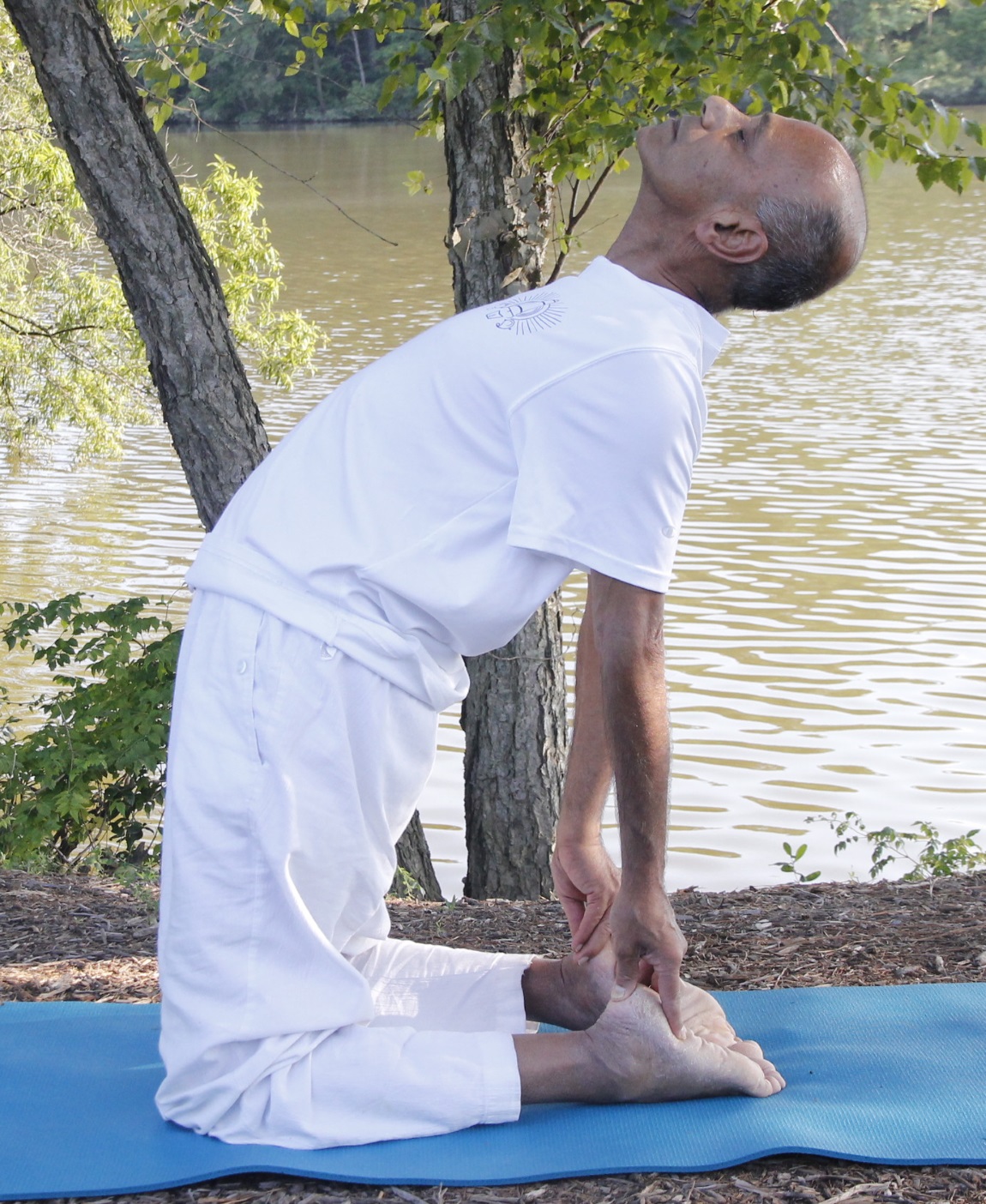
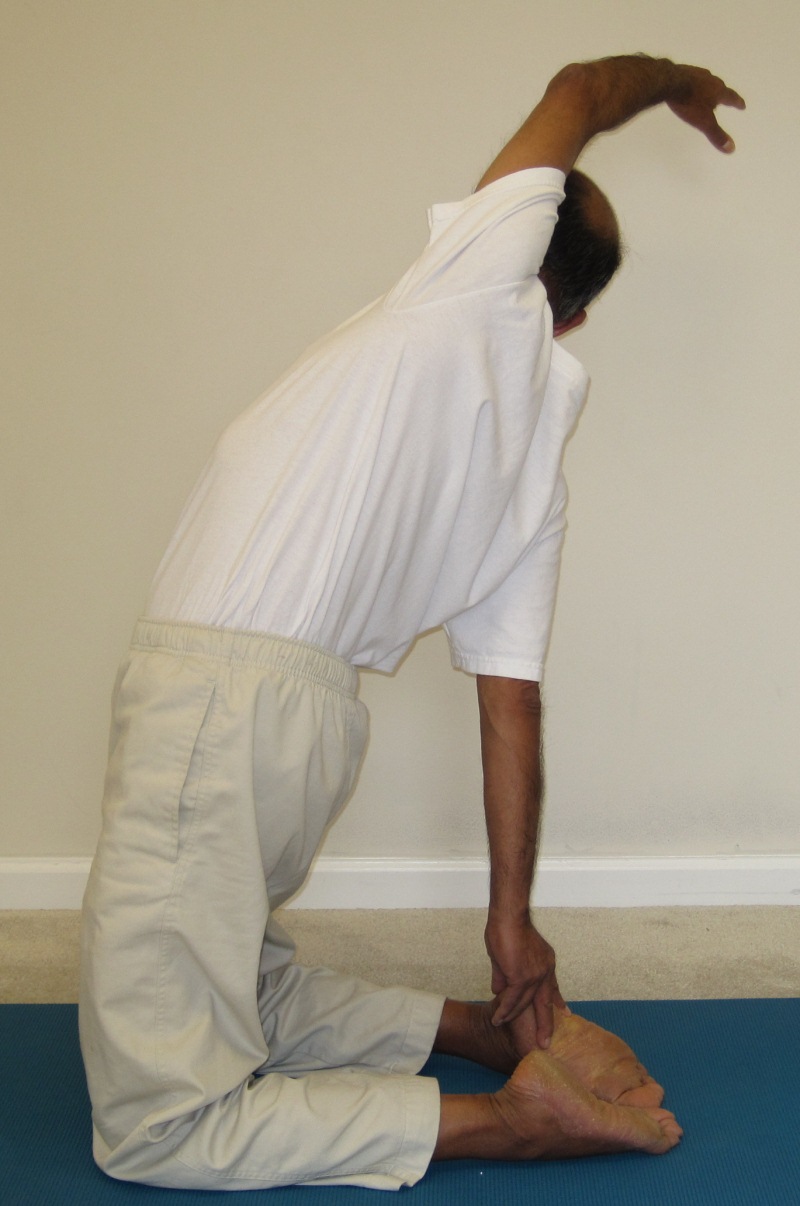
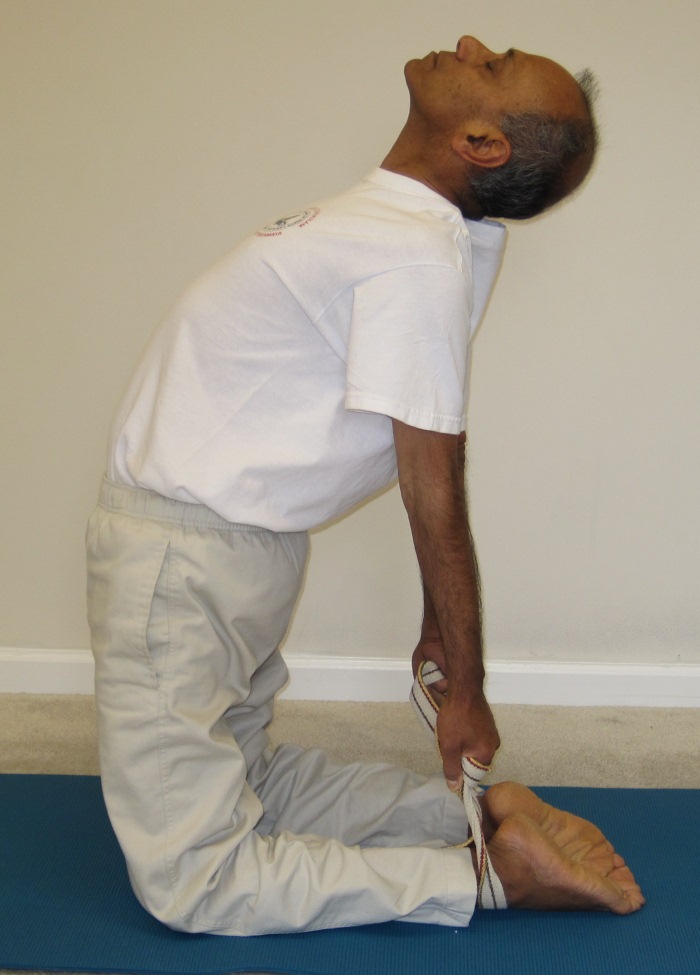
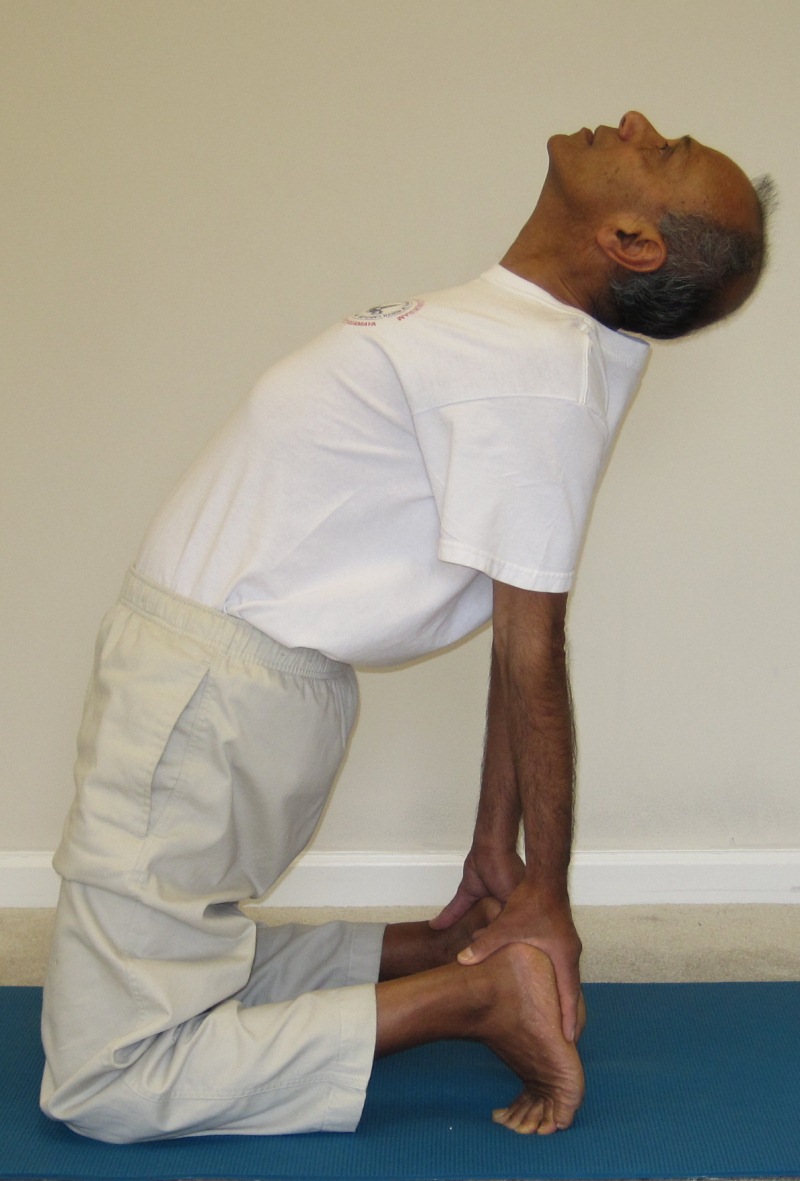

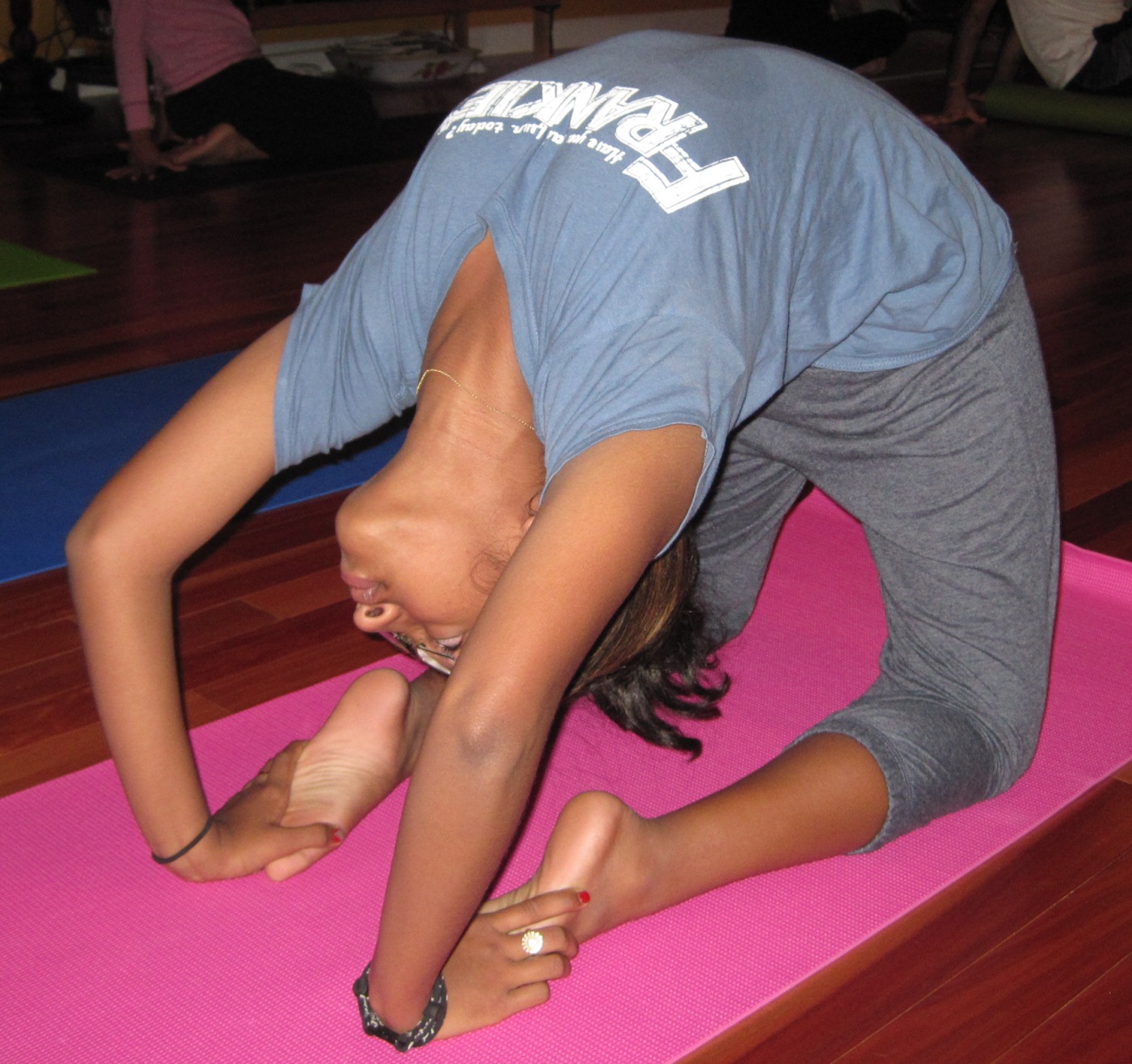
I practice the asana using the 4th variation. No straps. Toes curled . Heels up. 5 breaths.
Sounds good, Ramesh. Thanks for sharing.
[…] The pictures for this blog post comes from here. You will also find a nice explanation of the heart center from a holistic view at this link. And camel pose pix here. […]